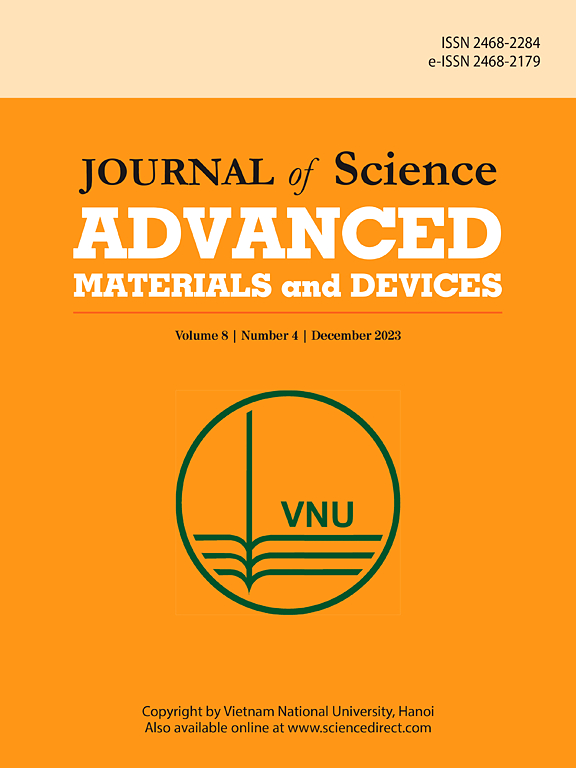The formation of strain-induced martensite and its influence on hydrogen compatibility of metastable austenitic stainless steels: A state-of knowledge review
IF 6.7
3区 材料科学
Q1 MATERIALS SCIENCE, MULTIDISCIPLINARY
Journal of Science: Advanced Materials and Devices
Pub Date : 2024-12-31
DOI:10.1016/j.jsamd.2024.100842
引用次数: 0
Abstract
Austenitic stainless stainless steels (ASS) are an important type of material used in hydrogen storage and handling equipment because of their exceptional corrosion resistance and mechanical qualities. Nevertheless, the hydrogen sensitivities of metastable ASS would be a notable concern since the strain-induced martensitic transformation (SIMT) can take place during the fabrication process. Hence, we performed tensile experiments on 304L and 316L alloys containing varying amounts of Ni content, simulating actual material deformation conditions. We conducted an analysis of the impact of Ni content on SIMT and presented a detailed description of the martensite nucleation and growth process. Subsequently, we conducted an analysis of the orientation connection of the martensitic transition using TEM. Subsequently, we summarized the effects of SIMT and hydrogen on the tensile, creep, and fatigue properties of materials. It was generally observed that in a hydrogen environment, SIMT, as a high-speed diffusion channel for hydrogen, exacerbates the detrimental effect of hydrogen on the material's mechanical properties. The significance of minimizing SIMT to enhance the hydrogen performance of metastable ASS is emphasized, and this article concluded by summarizing the practical methods for reducing the SIMT: optimizing the alloy composition, controlling the deformation temperature, and using post-forming annealing treatment. Through discussion, it was concluded that controlling the deformation temperature is not recommended as a method to eliminate strain-induced martensite.
亚稳奥氏体不锈钢应变诱导马氏体的形成及其对氢相容性的影响
奥氏体不锈钢(ASS)因其优异的耐腐蚀性和机械性能而成为氢储存和处理设备中使用的重要材料。然而,由于在制造过程中可能发生应变诱导马氏体相变(SIMT),亚稳态ASS的氢敏感性将是一个值得关注的问题。因此,我们对含有不同Ni含量的304L和316L合金进行拉伸实验,模拟实际材料变形条件。我们分析了Ni含量对SIMT的影响,并详细描述了马氏体的形核和生长过程。随后,我们利用透射电镜分析了马氏体相变的取向连接。随后,我们总结了SIMT和氢气对材料拉伸、蠕变和疲劳性能的影响。一般观察到,在氢环境下,SIMT作为氢的高速扩散通道,加剧了氢对材料力学性能的不利影响。强调了减小SIMT对提高亚稳态合金氢性能的重要意义,总结了减小SIMT的实用方法:优化合金成分、控制变形温度和采用成形后退火处理。通过讨论得出结论,控制变形温度不建议作为消除应变诱发马氏体的方法。
本文章由计算机程序翻译,如有差异,请以英文原文为准。
求助全文
约1分钟内获得全文
求助全文
来源期刊

Journal of Science: Advanced Materials and Devices
Materials Science-Electronic, Optical and Magnetic Materials
CiteScore
11.90
自引率
2.50%
发文量
88
审稿时长
47 days
期刊介绍:
In 1985, the Journal of Science was founded as a platform for publishing national and international research papers across various disciplines, including natural sciences, technology, social sciences, and humanities. Over the years, the journal has experienced remarkable growth in terms of quality, size, and scope. Today, it encompasses a diverse range of publications dedicated to academic research.
Considering the rapid expansion of materials science, we are pleased to introduce the Journal of Science: Advanced Materials and Devices. This new addition to our journal series offers researchers an exciting opportunity to publish their work on all aspects of materials science and technology within the esteemed Journal of Science.
With this development, we aim to revolutionize the way research in materials science is expressed and organized, further strengthening our commitment to promoting outstanding research across various scientific and technological fields.
 求助内容:
求助内容: 应助结果提醒方式:
应助结果提醒方式:


